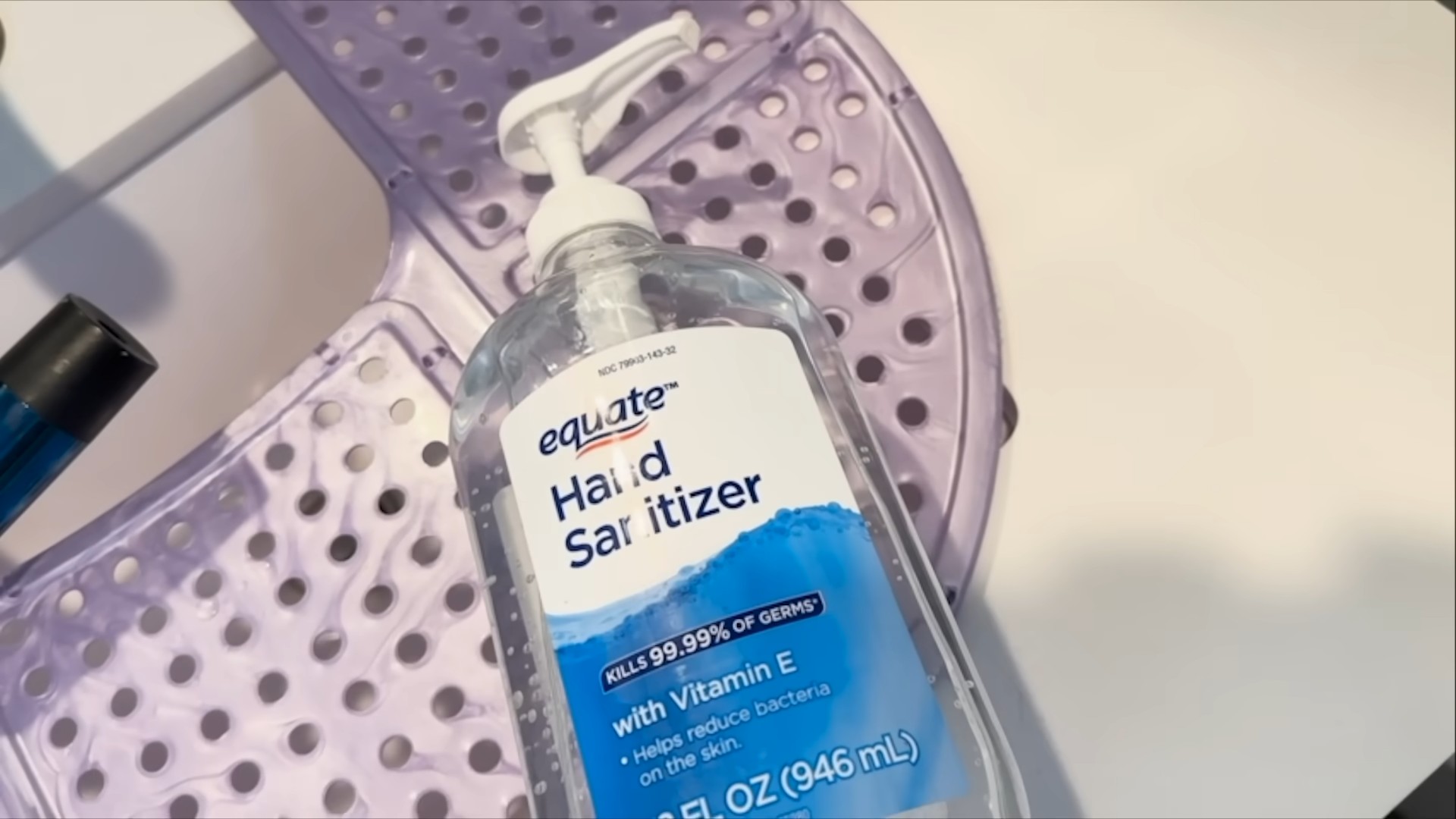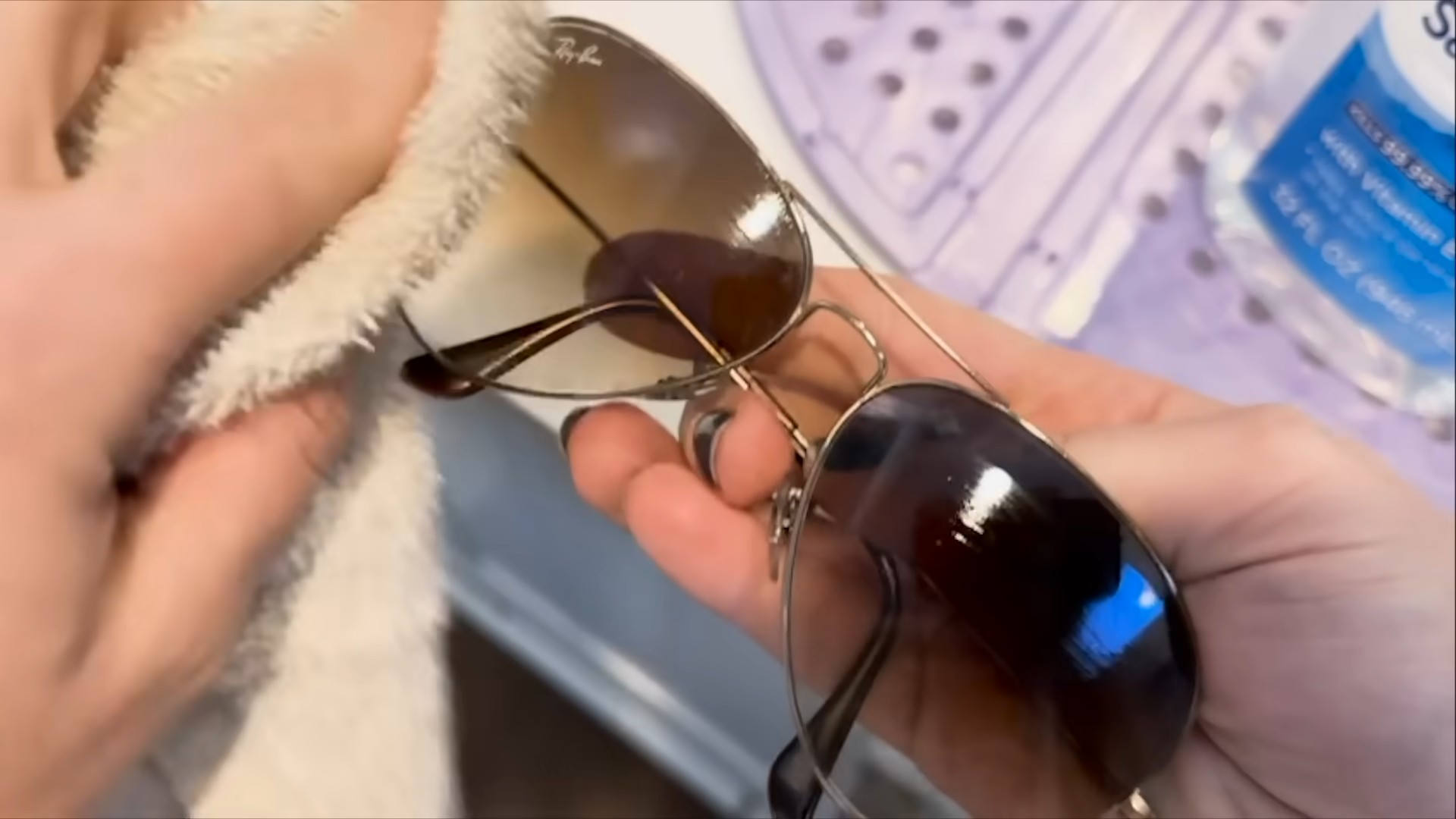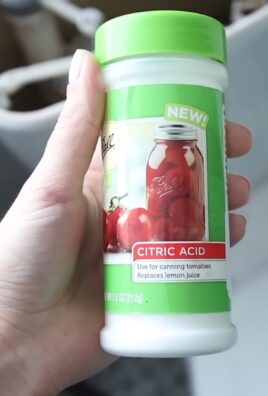Hand sanitizer cleaning hacks – who knew those little bottles of germ-fighting goodness could do so much more than just keep our hands clean? I’m always on the lookout for clever ways to simplify my life, and let me tell you, discovering the hidden cleaning power of hand sanitizer has been a game-changer!
While hand sanitizer’s primary purpose is a relatively modern invention driven by the need for accessible hygiene, the concept of using alcohol for cleaning and disinfecting has roots stretching back centuries. Think about it – ancient civilizations used alcohol-based solutions for wound care and sanitation. Now, we’re rediscovering that same power in a convenient, pocket-sized form.
Let’s face it, life is busy! We’re all juggling work, family, and everything in between. Who has time to spend hours scrubbing and cleaning? That’s where these hand sanitizer cleaning hacks come in. They’re quick, easy, and surprisingly effective for tackling those everyday messes and sticky situations. From removing stubborn stains to shining up surfaces, I’m going to share some of my favorite tips and tricks that will save you time and effort. Get ready to unlock the unexpected cleaning potential of this everyday essential!

Hand Sanitizer: Your Unexpected Cleaning Superhero!
Okay, so we all know hand sanitizer is a germ-fighting champion, especially these days. But did you know it’s also a surprisingly versatile cleaning tool around the house? I’ve been experimenting with it, and I’m amazed at all the little messes it can tackle. Forget harsh chemicals for some of these – hand sanitizer is your new best friend!
Why Hand Sanitizer Works as a Cleaner
The magic lies in the alcohol content. Alcohol is a fantastic solvent, meaning it can dissolve and lift away grime, grease, and even some sticky residues. Plus, many hand sanitizers contain moisturizers, which can help prevent surfaces from drying out. Just remember to test it on an inconspicuous area first, especially on delicate surfaces.
The Ultimate Hand Sanitizer Cleaning Guide
Here’s a breakdown of some of my favorite hand sanitizer cleaning hacks:
* Sticky Residue Remover: Perfect for removing sticker residue, tape marks, and even crayon marks from hard surfaces.
* Glass and Mirror Cleaner: Leaves a streak-free shine on mirrors, windows, and even your phone screen.
* Ink Stain Fighter: Can help lift ink stains from fabrics and other surfaces.
* Shoe Scuff Eraser: Works wonders on removing scuff marks from leather and synthetic shoes.
* Jewelry Cleaner: Restores shine to your jewelry by removing dirt and grime.
* Electronics Cleaner: Safely cleans your phone, keyboard, and other electronic devices.
* Permanent Marker Remover (on some surfaces): Can sometimes lift permanent marker from non-porous surfaces.
* Deodorizer: Freshens up small spaces like your car or gym bag.
Getting Started: Essential Supplies
Before we dive into the hacks, let’s gather our supplies. You probably already have most of these!
* Hand Sanitizer: Any alcohol-based hand sanitizer will work. Gel or liquid, it doesn’t really matter.
* Microfiber Cloths: These are my go-to for cleaning because they’re gentle and effective.
* Cotton Swabs: Perfect for getting into those tiny crevices.
* Soft Brush (Optional): An old toothbrush or a small cleaning brush can be helpful for scrubbing.
* Water (Optional): For diluting the hand sanitizer if needed.
* Spray Bottle (Optional): For easier application on larger surfaces.
Hack 1: Banishing Sticky Residue
Oh, the dreaded sticky residue! Whether it’s from price tags, packing tape, or rogue stickers, it’s always a pain. But hand sanitizer makes quick work of it.
Step-by-Step Instructions:
1. Apply Hand Sanitizer: Squirt a generous amount of hand sanitizer directly onto the sticky residue. Make sure the entire area is covered.
2. Let it Sit: Allow the hand sanitizer to sit for a few minutes (2-5 minutes should do the trick). This gives the alcohol time to break down the adhesive.
3. Wipe Away: Using a clean microfiber cloth, firmly wipe away the residue. You might need to apply a little pressure.
4. Repeat if Necessary: For stubborn residue, repeat steps 1-3.
5. Clean the Surface: Once the residue is gone, wipe the area with a damp cloth to remove any remaining hand sanitizer.
Hack 2: Sparkling Glass and Mirrors
Forget expensive glass cleaners! Hand sanitizer leaves glass and mirrors streak-free and sparkling.
Step-by-Step Instructions:
1. Apply Hand Sanitizer: You have two options here. You can either squirt a small amount of hand sanitizer directly onto the glass or mirror, or you can dilute it with a little water in a spray bottle (about 1 part hand sanitizer to 2 parts water).
2. Wipe with a Microfiber Cloth: Immediately wipe the surface with a clean, dry microfiber cloth. Use a circular motion to spread the hand sanitizer evenly.
3. Buff to a Shine: Use a fresh, dry section of the microfiber cloth to buff the surface until it’s sparkling clean.
Hack 3: Conquering Ink Stains
Ink stains can be tricky, but hand sanitizer can often help lift them, especially on fabrics.
Important Note: Always test this method on an inconspicuous area of the fabric first to make sure it doesn’t damage the material or cause discoloration.
Step-by-Step Instructions:
1. Blot the Stain: If the ink stain is fresh, blot it with a clean cloth to absorb as much ink as possible. Don’t rub, as this can spread the stain.
2. Apply Hand Sanitizer: Apply a generous amount of hand sanitizer directly onto the ink stain.
3. Let it Sit: Allow the hand sanitizer to sit for a few minutes (5-10 minutes).
4. Blot Again: Gently blot the stain with a clean cloth. You should see the ink transferring to the cloth.
5. Repeat if Necessary: Repeat steps 2-4 until the stain is significantly lighter.
6. Launder as Usual: Wash the item of clothing as usual, following the care instructions on the label.
Hack 4: Erasing Shoe Scuffs
Scuffed shoes can make even the newest pair look old and worn. Hand sanitizer to the rescue!
Step-by-Step Instructions:
1. Apply Hand Sanitizer: Apply a small amount of hand sanitizer directly onto the scuff mark.
2. Wipe with a Cloth: Using a clean cloth, gently rub the scuff mark in a circular motion.
3. Buff to a Shine: Use a clean, dry section of the cloth to buff the area until the scuff mark is gone.
4. Repeat if Necessary: For stubborn scuff marks, repeat steps 1-3.
Hack 5: Reviving Jewelry’s Sparkle
Dirty jewelry loses its luster. Hand sanitizer can quickly restore its shine.
Step-by-Step Instructions:
1. Apply Hand Sanitizer: Squirt a small amount of hand sanitizer onto a soft cloth.
2. Wipe the Jewelry: Gently wipe the jewelry with the cloth, paying attention to any areas with dirt or grime.
3. Rinse with Water: Rinse the jewelry thoroughly with water to remove any remaining hand sanitizer.
4. Dry with a Soft Cloth: Dry the jewelry with a clean, soft cloth.
Hack 6: Cleaning Electronics Safely
Our phones and keyboards are germ magnets! Hand sanitizer can help keep them clean without damaging them.
Important Note: Always turn off and unplug the device before cleaning. Avoid getting any liquid into openings.
Step-by-Step Instructions:
1. Apply Hand Sanitizer to a Cloth: Never apply hand sanitizer directly to the device. Instead, squirt a small amount onto a microfiber cloth.
2. Wipe the Surface: Gently wipe the surface of the device with the damp cloth.
3. Dry with a Clean Cloth: Use a clean, dry microfiber cloth to dry the surface.
4. Use Cotton Swabs for Crevices: For hard-to-reach areas like keyboard keys, use a cotton swab dampened with hand sanitizer.
Hack 7: Tackling Permanent Marker (Maybe!)
This one is a bit of a gamble, but I’ve had some success removing permanent marker from non-porous surfaces like whiteboards and plastic with hand sanitizer.
Important Note: This method is not guaranteed to work and may not be effective on all surfaces. Always test on an inconspicuous area first.
Step-by-Step Instructions:
1. Apply Hand Sanitizer: Apply a generous amount of hand sanitizer directly onto the permanent marker stain.
2. Let it Sit: Allow the hand sanitizer to sit for a few minutes (2-5 minutes).
3. Wipe Away: Using a clean cloth, firmly wipe away the stain.
4. Repeat if Necessary: Repeat steps 1-3.
5. Clean the Surface: Once the stain is gone (or as much as possible), wipe the area with a damp cloth to remove any remaining hand sanitizer.
Hack 8: Freshening Up Small Spaces
Hand sanitizer can also act as a quick deodorizer for small spaces.
Step-by-Step Instructions:
1. Apply Hand Sanitizer: Squirt a small amount of hand sanitizer onto a cloth or cotton ball.
2. Place in the Space: Place the cloth or cotton ball in the area you want to freshen up, such as your car, gym bag, or a small closet.
3. Let it Evaporate: The alcohol in the hand sanitizer will evaporate, leaving behind a fresh, clean scent.
Important Safety Tips
*

Conclusion
So, there you have it! Transforming your humble bottle of hand sanitizer into a powerhouse cleaning agent is not just a clever hack; it’s a game-changer for maintaining a sparkling and germ-free home. We’ve explored a range of applications, from banishing stubborn stains to revitalizing dull surfaces, all thanks to the surprising versatility of this everyday essential.
Why is this DIY trick a must-try? Because it’s efficient, cost-effective, and readily accessible. You likely already have hand sanitizer in your home, making it a convenient alternative to harsh chemical cleaners. It’s also a fantastic way to repurpose hand sanitizer that might be lingering around, especially those bottles with less-than-appealing scents or textures. Beyond the practical benefits, using hand sanitizer as a cleaner can be a gentler option for certain surfaces, preventing damage or discoloration that stronger chemicals might cause.
But the real magic lies in its effectiveness. The high alcohol content in most hand sanitizers makes it a potent disinfectant, capable of killing germs and bacteria on contact. This is particularly useful for high-touch areas like doorknobs, light switches, and countertops. Plus, the gel consistency allows it to cling to surfaces, providing longer contact time for optimal cleaning.
Looking for variations? Absolutely! Consider adding a few drops of essential oil, such as lemon or tea tree, to your hand sanitizer for an extra boost of fragrance and antimicrobial properties. For tougher stains, you can create a paste by mixing hand sanitizer with baking soda. This abrasive mixture can help lift stubborn grime without scratching delicate surfaces. Always test any cleaning solution in an inconspicuous area first to ensure it doesn’t damage the material. You can also experiment with different application methods. Try using a microfiber cloth for streak-free cleaning or a toothbrush for reaching tight corners and crevices. Remember to always wear gloves when cleaning, especially when dealing with larger areas or prolonged exposure.
We’ve covered a lot of ground, from removing permanent marker to shining stainless steel. But the possibilities are truly endless. The key is to experiment and discover new ways to harness the cleaning power of hand sanitizer in your own home.
Now, it’s your turn! We wholeheartedly encourage you to try these hand sanitizer cleaning hacks and see the amazing results for yourself. Don’t be afraid to get creative and adapt the techniques to suit your specific needs and surfaces. And most importantly, share your experience with us! We’d love to hear about your successes, your challenges, and any new discoveries you make along the way. Leave a comment below, tag us on social media, and let’s build a community of savvy cleaners who are revolutionizing the way we approach household chores. Let’s unlock the full potential of **hand sanitizer cleaning hacks** together!
Frequently Asked Questions (FAQ)
1. What type of hand sanitizer works best for cleaning?
The most effective hand sanitizer for cleaning purposes is one with a high alcohol content, ideally between 60% and 70%. This concentration is generally considered the sweet spot for killing germs and bacteria. Gel-based sanitizers tend to work better than liquid ones because they cling to surfaces longer, allowing for more effective disinfection. Avoid using hand sanitizers with added moisturizers or fragrances, as these can leave a residue on surfaces. Look for a simple, clear formula for optimal cleaning performance.
2. Can I use hand sanitizer to clean all surfaces?
While hand sanitizer is a versatile cleaner, it’s not suitable for all surfaces. Avoid using it on porous materials like unfinished wood or fabrics, as it can cause staining or discoloration. It’s also best to avoid using it on delicate surfaces like painted walls or antique furniture without testing it in an inconspicuous area first. Hand sanitizer is generally safe for use on non-porous surfaces like glass, metal, plastic, and sealed countertops. Always test a small area before applying it to the entire surface to ensure it doesn’t cause any damage.
3. Is hand sanitizer as effective as traditional cleaning products?
Hand sanitizer can be a surprisingly effective cleaning agent, especially for disinfecting surfaces and removing certain types of stains. However, it’s not a complete replacement for traditional cleaning products. For heavy-duty cleaning tasks, such as removing grease or grime, you may still need to use a dedicated cleaner. Hand sanitizer excels at disinfecting high-touch areas and removing stains like permanent marker or sticky residue. It’s a great option for quick cleanups and maintaining a germ-free environment.
4. Does hand sanitizer leave a residue on surfaces?
Some hand sanitizers can leave a slight residue on surfaces, especially those with added moisturizers or fragrances. To minimize residue, use a clear, gel-based sanitizer with a high alcohol content. After applying the sanitizer, wipe the surface with a clean, damp cloth to remove any excess product. This will help prevent stickiness or buildup. If you notice a persistent residue, try using a diluted solution of vinegar and water to clean the surface.
5. Is it safe to use hand sanitizer around children and pets?
While hand sanitizer is generally safe for topical use, it’s important to exercise caution when using it around children and pets. Keep hand sanitizer out of reach of children to prevent accidental ingestion. If a child or pet ingests hand sanitizer, contact a poison control center or seek medical attention immediately. When cleaning with hand sanitizer, ensure the area is well-ventilated to avoid inhaling fumes. Allow the surface to dry completely before allowing children or pets to come into contact with it.
6. Can I use expired hand sanitizer for cleaning?
Expired hand sanitizer may still be effective for cleaning purposes, but its disinfecting properties may be diminished. The alcohol content in hand sanitizer can evaporate over time, reducing its ability to kill germs and bacteria. While it’s still better than nothing, it’s best to use fresh hand sanitizer for optimal cleaning and disinfecting. If you’re using expired hand sanitizer, consider applying it more liberally and allowing it to sit on the surface for a longer period of time to compensate for the reduced alcohol content.
7. What are some other creative uses for hand sanitizer in cleaning?
Beyond the uses mentioned in the article, hand sanitizer can be used to clean computer screens, remove scuff marks from shoes, and even polish jewelry. It’s also a great way to disinfect your phone and other electronic devices. Just be sure to apply it sparingly and avoid getting it into any openings or crevices. Hand sanitizer can also be used to remove sticky labels and adhesive residue from various surfaces. Its versatility makes it a valuable addition to your cleaning arsenal.
8. How can I make my own hand sanitizer for cleaning?
While you can make your own hand sanitizer, it’s crucial to follow a reliable recipe to ensure it’s effective at killing germs. The CDC recommends using a formula that contains at least 60% alcohol. A simple recipe involves mixing isopropyl alcohol (99%) with aloe vera gel and a few drops of essential oil for fragrance. Be sure to measure the ingredients accurately and mix them thoroughly. Homemade hand sanitizer may not be as effective as commercially produced sanitizers, so it’s important to use it responsibly and practice other good hygiene habits, such as frequent handwashing.




Leave a Comment